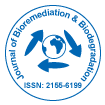Removal of Heavy MetalsfromIndustrialWastewaterTreatment Sludge Using Earthworms (Eisenia Fetida)
Abstract
Industrial wastewater sludge is a solid or semi-solid material which contains different toxic substances depending on the type of industry. Different industries need to use of different treatment and disposal methods for their waste and wastewater. Industrial wastewater sludge may be in a high amount and volume, and processing and removal of these sludge are quite complex and difficult problems. In solution of this problem, earthworms belonging to soil macrofauna group greatly contribute to recycling of organic matter. Also, one of the soil treatment or improvement methods is the vermicomposting method using earthworms in the soil polluted with contaminants based on heavy metal. In this study, different combinations of iron-steel plant wastewater treatment sludge and cow dung were prepared and left for vermicomposting with the earthworm, EiseniaFetida (Savigny). Then, the amount of heavy metal received by earthworms in their body structures, the changes of taken metal depending on the time and the amount of iron- steel waste water treatment sludge and the effect of the sludge on the earthworms were evaluated. Experiments were established as 3 replications and after 30th, 90th and 120th days of vermicomposting process, metal analyses were carried out by weighing the live weights of earthworms. As a result of the analysis, it was determined that there was an increase in the receiving of some heavy metals (Cu, Pb, Ni, Zn and Cr) in the body of earthworms depending on the time and the amount of wastewater treatment sludge.
Keywords: Iron-steel plants; Wastewater treatment sludge; Eisenia Fetida; Vermicompost; Heavy metal
